Britain is falling out of love with traditional bottled ales at the hands of insurgent craft brewers and decades of neglect from brand owners. As drinkers desert them, do PBAs have a future?
Is it all over for ale? Britain’s once-proud premium bottled ale sector - we’re talking traditional fare like London Pride and Spitfire, not craft beer - is struggling to stay afloat.
Retail sales of PBAs have fallen £15.6m since 2016 and, according to exclusive data, the number of under-45s shopping the category fell by 12.3% over the past year alone (vs a total decline of 4.4%). The total number of shoppers buying craft, meanwhile, grew by 7.2% [Kantar 52 w/e 24 February 2019].
Big brands are haemorrhaging sales. At the time of The Grocer’s Top Products Report in December, Bass, Hobgoblin, Fuller’s London Pride, Spitfire, Badger Fursty Ferret, Black Sheep Ale and Boddingtons were all in double-digit value decline [Nielsen 52 w/e 8 September 2018].
A similar situation is playing out in the on-trade, where sales of PBAs’ draught equivalents - cask ales - have been steadily falling. Value sales of cask in the on-trade are down £195m since 2017, according to CGA data, equivalent to a drop in volume of 485,916 hectolitres [52 w/e 23 February 2019].
It doesn’t take a degree in rocket science to work out why craft beers are utterly cannibalising their more traditional cousins. Next to the likes of Fourpure, Magic Rock and Beavertown, whose beers are packaged in audaciously designed, striking cans, PBAs are beginning to look old hat.
The craft scene’s flair for the exuberant has at times put it on a collision course with the Portman Group (Wales’ Tiny Rebel, for instance, was rapped by the watchdog in 2017 after the group deemed the artwork on cans of its Cwtch ale too overtly resembled a fizzy pop can and risked appealing to children). But that the nation’s beer aisles have all gone a bit Willy Wonka has helped usher in a golden era for more experimental brands.
“Adversity forced the big lager brewers to get their act together, so perhaps it will do the same for ale producers”
In PBAs, meanwhile, “the brands have become commodified and uninteresting,” argues beer consultant Bill Simmons. “Apart from the odd cosmetic refurb of their labels, they have predominantly remained the same over the last 20 years. There are far too many ‘me-too’ products. I would be very interested to compare a fixture from the early 1990s to now - they would look no different.”
So it was no surprise the bulk of new brews to hit Tesco’s shelves with the supermarket’s latest range review were craft cans. Or that when Waitrose added almost 100 new craft beers and ciders last year in a massive update of its beer range, it was PBAs that lost space.
It’s not all about packaging: obviously what’s in the bottles is important. But Simmons says PBAs have struggled to maintain on-shelf quality. “I take quite a lot of beers off the shelf that are oxidised, and many are light-struck.”
Meanwhile, the experimental nature of the craft brewing scene has led to an arguably far wider range of tastes that cater to a broader range of palates. The craft boom has woken shoppers up to “flavour - but real flavour, from real ingredients”, says Drinks Maven’s Jessica Mason. “Breweries that had been plugging the same thing year in and year out fell from favour.
“While people craved something that awoke their palates and aligned with their own lifestyle choices, the beers that offered no element of discovery or surprise took a hit.”
The fact that mainstream lager brands, which at the turn of the decade were seriously floundering, have been so effectively revitalised shows the importance good branding and marketing can have, even when the taste of the product hasn’t changed.
Lager resurgence
“You need to give credit to the likes of AB InBev for building equity back into core lager brands like Stella,” says one brewing industry source. “Ten years ago, you would have had nothing good to say about that brand, but now we’re saying what a tremendous job they’ve done on turning it into a premium product.”
So competition is fiercer from both craft beer and lager. But pricing has played a role in ale’s downfall, too. Many bottled ales can be bought for roughly the price of a loaf of Hovis at a time when premiumisation is king.
“The regional brewers built the PBA fixture up to become this huge great big business and then just left it,” says Simmons. “And their answer to all the problems it faces is the same answer they’ve always had, which is to keep cutting the price and make no margin at all.”
Case in point: when Fuller’s announced it was selling its entire brewing business to Asahi in January, it revealed pubs, rather than beers, had come to account for a whopping 87% of its operating profits.
“Neither the retailer, wholesaler or supplier is making a margin,” says Simmons. “Supermarkets are selling two four-packs for £10? That’s £1.20 a bottle. How is that sustainable when we’re meant to be talking about ‘premium’ ales?”
Read more: What does Asahi’s acquisition of Fuller’s say about the state of British brewing?
The brewing industry source suggests this can be at least in part attributed to Britain’s brewers making unprofitable deals with the discounters. “Before the discounters rose to prominence, most of the top five or 10 bottled ales sold for about £1.99 a bottle.
“There were of course, multibuys, but that was the standard price. But as the discounters grew they engaged with various bottled ale brewers and in their wisdom decided to set a price point of about £1.25.
“That is a huge deflationary drop. And of course, the rest of the mults have followed or had to go some way towards following them. This all means you’ve had some very big brands for sale at very cheap prices. The weakest form of flattery is when your brand sells well when it’s discounted.”
But if Stella Artois - a thoroughly mainstream drink which at one point even carried the unfathomable sobriquet of ‘wifebeater’ - can turn it around, then why can’t Britain’s traditional brewers, who have far more credibility from a brand perspective, do the same?
There are a few who have. Doom Bar, the sector’s number one, sells tremendously well (it grew its value sales by almost a third this year) thanks to a concerted push by owner Molson Coors to “assert its credentials as a contemporary brand in a historically traditional category”, says Coors off-trade sales director Alpesh Mistry. It has also introduced a new ‘chilled cask’ version of the drink in the on-trade [Nielsen 52 w/e 23 March 2019]. Which would suggest it’s not necessarily the styles of beer that are keeping drinkers away.
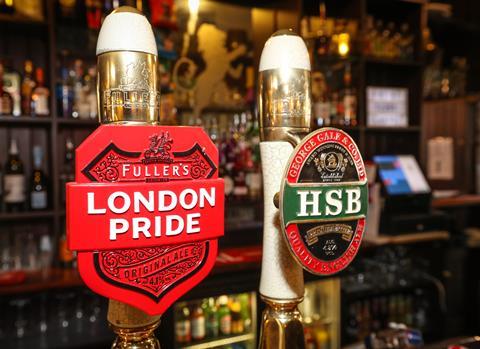
Is export the future of PBAs?
When Fuller’s sold to Asahi, sector experts highlighted the potential for London Pride, with its British credentials and heritage, in the export market. St Austell, meanwhile, signed a lucrative deal to sell its ales on British Airways flights in 2016. Marston’s export business is growing since it bought Charles Wells in 2017, which it says landed it with “an experienced and established export team”, as well as brands that play well abroad such as Young’s and McEwan’s.
“Tradition, heritage and craft are all factors which play very well in Asia, where the big growth potential for premium beer lies,” says Mintel associate director of food & drink Jonny Forsyth. And Brexit having sent the pound spiralling downwards means exporting to some countries is now effectively cheaper.
But beer consultant Bill Simmons argues export shouldn’t be seen as a silver bullet to the British PBA sector’s woes. “These brands do well because they are relevant to export customers. But what does Butcombe Bitter, Shepherd Neame or Hall & Woodhouse mean to somebody in Shanghai?”
Old duffers
The problem, Simmons argues, is that dynastic, often family-run businesses don’t necessarily make the greatest innovators. Conservatism is in their blood. “The category is run by old duffers for old duffers and needs an injection of youth,” he says. “Every time you want to change something at one of these companies you end up with someone telling you ‘but we’ve always done it this way’. They will tell you their grandfathers would be turning in their graves.”
Another brewer that’s at least been trying to change is Fuller’s. It significantly boosted its standing in the craft world two years ago (long before its sale to Asahi) when it teamed up with six of the UK’s top craft brewers, such as Fourpure and Cloudwater, for a Waitrose-exclusive six-pack of brews called Fuller’s & Friends. It was met with almost universal acclaim and a second collection is now in the works.
“This was a great innovation because it went into one supermarket at a good price, and it had integrity,” says Simmons. But not all of the traditional brewers’ moves into craft have been as successful.
Many, such as Marston’s, have started their own ‘pilot’ breweries alongside their core operations to brew limited-run beers, or launched ‘craft’ spin-offs. Badger, for instance, launched its first canned beer, billed as a ‘crafted’ IPA called The Wicked Wyvern, last year.
“The British regionals have a history of changing their beers to match people’s drinking habits,” says Martyn Railton, MD of beer distributor Euroboozer. “But they have tried to release ‘craft’ brands that the craft beer drinker won’t drink because they know it’s not actually craft, while traditional ale consumers don’t understand it.”
“The weakest form of flattery is when your brand sells well when it’s discounted”
Retailers are getting impatient. “As a retailer you’ve got to try and build value into your feature,” says Thornbridge Brewery CEO Simon Webster. “Tesco for instance have seen the success of the three beers for £5.25 deal in craft. They’ve seen there is a huge gap between something like Tim Taylor’s Landlord and something like our collaboration beer with Magic Rock.”
Our source adds: “They are very disappointed. They over-ranged [PBAs] in the hope the category would grow, but have never had their payday because as sales grew the price dropped. It is very bleak.”
This may mean they end up developing more own-label products with traditional ale brewers to pick up the slack, in effect leading a reappraisal of the category themselves. “I think you are going to see some more interesting styles adapt the PBA format, so they can bridge it to craft,” says Webster.
Webster also pinpoints the work of breweries such as Sussex’s Dark Star (which was bought by Fuller’s in 2018) as bridging that gap. Dark Star, admired by many beer aficionados for its quality cask ales and pubs, traffics in traditional styles such as bitters, pales and brown ales, but with a more modern aesthetic.
Yet Dark Star has, as a rule, avoided working with supermarkets in the past, explains its MD James Cuthbertson, viewing the mults generally as anathema to running a profitable beer business. “Since joining Fuller’s we’ve become a more efficient business and we’ve had conversations with the larger supermarkets about doing things, but we were never out to sell beer to lose money. It would have been setting off on the wrong foot. There were so many brewers looking to get that spot and it was so competitive - anything we do with the big guys needs to be profitable for us too.”
Read more: BrewDog’s ‘annual general mayhem’ is Britain’s weirdest beer festival
If more brands like Dark Star that are credible with craft drinkers (Harvey’s also comes to mind) do end up breaking into the mults, they could feasibly lure some drinkers back over to PBAs.
Change is also afoot in that many of the traditional ale sector’s biggest businesses are changing hands. Fuller’s sale to Asahi earlier this year followed Marston’s 2017 acquisition of Charles Wells’ beer business. There has been much industry speculation that Greene King could be next.
Evangelists for real ale may despair for the independent credentials of these British institutions, but fresh blood is needed. “It will be interesting to see if Fuller’s will be the first out of the trap now they have access to investment from Asahi,” says our brewing industry source. “Asahi know the need for a product to look premium for them to get their price.” If Asahi can replicate what Molson Coors has achieved with Doom Bar, it may be on to a winner. London Pride as a brand has no shortage of goodwill it could draw on for such a resurgence.
So there may yet be hope. Our source stresses: “Ultimately, 99% of the time, the liquid is absolutely fine. Adversity forced the big lager brewers to get their act together, so perhaps it will do the same for ale.”
Still, not everyone is as optimistic. “People aren’t stupid,” says Simmons. “Craft has given them flavour and taste. What you had before was people just drinking brown liquid that pretty much tasted the same.”
In any case, the UK’s old-school brewers better think quickly, or some could end up dead and buried.
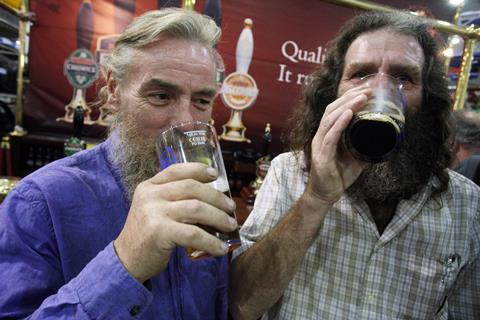
Is the Campaign for Real Ale still relevant?
The Campaign for Real Ale is the UK’s biggest consumer group, and for many years has been a force to be reckoned with (by ‘real ale’, of course, it means cask - and PBAs). It was instrumental in lobbying George Osborne to scrap the beer duty escalator in 2013 and bring the Pubs Code to fruition in 2016. Stalls at its Great British Beer Festival were highly coveted by brewers.
But after two years of consultation, a much-anticipated project to revitalise the group went awry when a special resolution to widen Camra’s remit to include all beer and cider drinkers rather than just ‘real ale’ drinkers failed, despite 72% of its members having voted for it (thanks to small company rules that require a 75% majority to pass a special resolution).
To add insult to injury, Brad Cummings, MD of craft brewer Tiny Rebel and vocal advocate of breaching the gap between craft and ‘real’ ale, was denied a seat on its national executive after running a campaign promising to modernise the “outdated and increasingly irrelevant” institution.
Months after the motion failed, Camra’s chief executive Tim Page, who was seen by many to be the driving force behind its revitalisation drive, resigned. And membership has since fallen, dropping from 191,477 to 191,013 since March 2018 (though admittedly this is a small decrease in the grand scheme of things).
Regardless, Camra national director Ben Wilkinson says positive changes are underway. “We are trying to broaden our membership offer and democratise the campaign, as well as activate members from a broader demographic.
“We’ve also appointed a full-time member of staff who is working to make our festivals more of a learning experience, where people will be able to come along and find out more about how beer is made, and what the different styles are, so when they leave they have something they can take to the on or off-trade.”
But given the surging popularity for alternative organisations such as the Society of Independent Brewers and competitor festivals such as Craft Beer Rising and The London Craft Beer Festival, the question for Camra is whether this is all too little, too late.








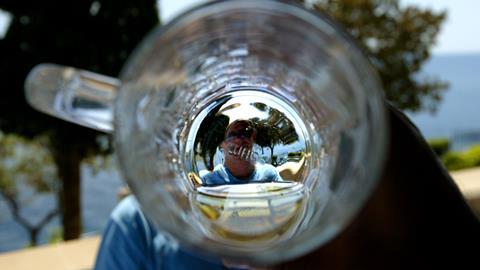




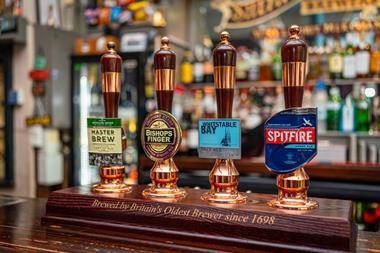
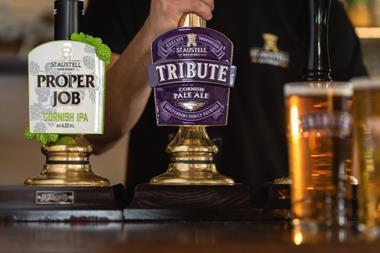










No comments yet